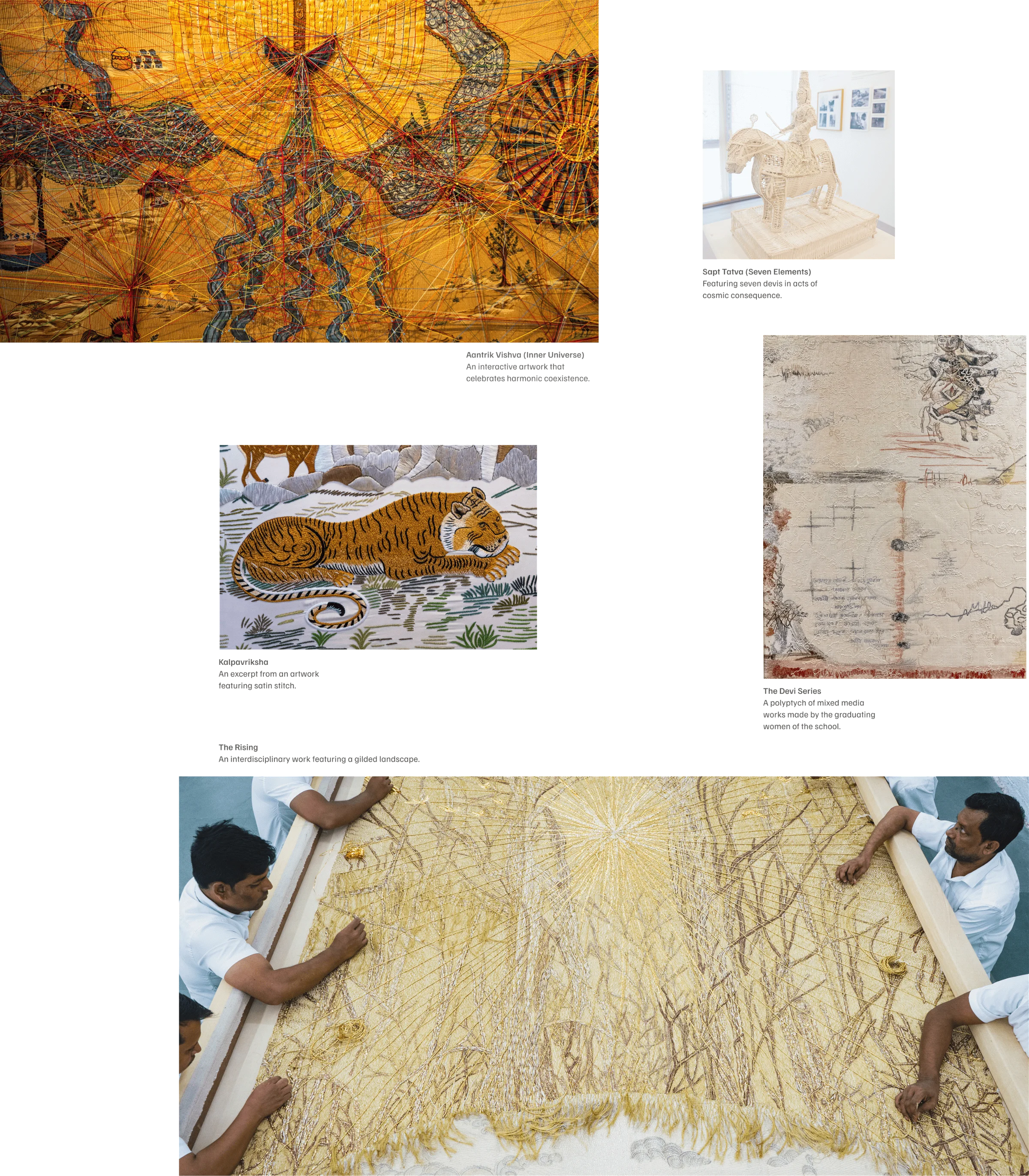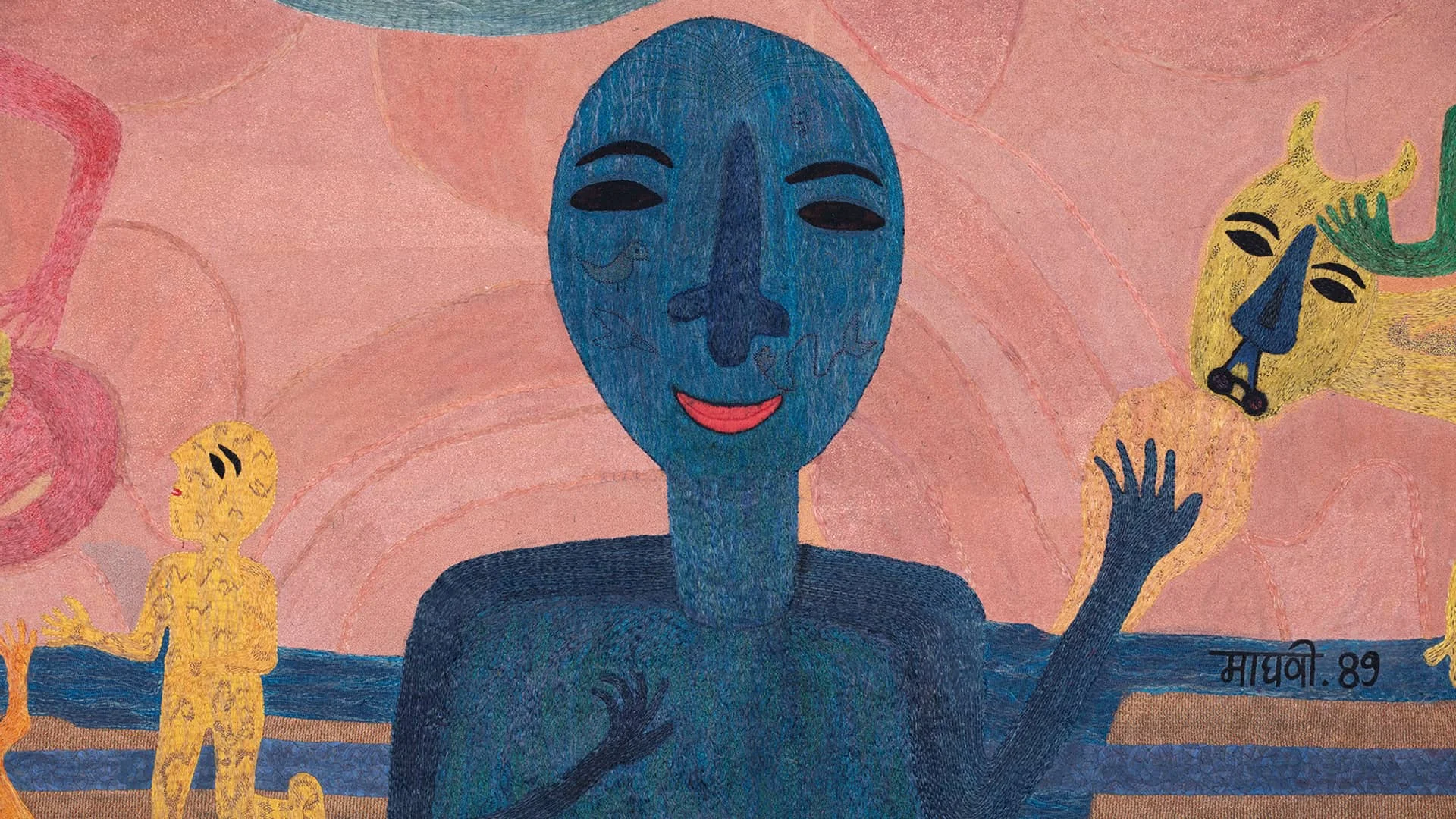
Cosmic Garden
An artistic collaboration
between Madhvi Parekh,
Manu
Parekh, Karishma Swali
& Chanakya Foundation
Maria Alicata & Paola Ugolini
20.04.2024 - 24.11 2024
Salone Verde - Art & Social
Club in Venice, Italy
“ I recognized that if craft is an expression of the human spirit in
material form, the craftspeople are artists who use the medium of
craft to express their collective identity.”
KARISHMA SWALI
The exhibition, titled 'Cosmic Garden,' emerges from an ongoing fertile exchange between acclaimed Indian artists Madhvi Parekh and Manu Parekh, in collaboration with Karishma Swali, Artistic Director of Mumbai-based Chanakya School of Craft — a non-profit institute committed to the emancipation of women through craft. Marking its inaugural showcase in Venice, the presentation pays homage to the pluralistic beauty of India’s artisanal legacies and indigenous art traditions. Curated by Paola Ugolini and Maria Alicata, the exhibition is set to be unveiled at the Salone Verde - Art & Social Club in Venice, Italy, from April 20th to November 24th, 2024.
This carefully curated collection embraces a multidisciplinary approach, dismantling entrenched ideological hierarchies within the art world. It casts a spotlight on the contemporary reinterpretation of traditional techniques, transcending conventional boundaries to carve out a fresh artistic vernacular rooted in collective cultural histories. The exhibition features an array of works, including paintings and sculptures, as well as their metamorphosis into a third interdisciplinary medium—hand-embroidery — an art form refined over millennia.


Manu Parekh's art assimilates India's cultural tapestry while embracing elements of Western modernism and abstract expressionism. His vibrant compositions, characterized by broken lines, stripes, crosses, and floral motifs, embody the cosmic harmony of masculine and feminine energies.
On the other hand, Madhvi Parekh's works portray formidable female deities encircled by celestial beings and symbolic representations, inspired from Indian myths and emphasizing the connection between humanity and the divine.
Karishma Swali and 320 highly-skilled artisans from Chanakya conceptualized and interpreted the textile re-imaginings through meticulous needlework embroidery and handcrafting techniques, utilizing organic materials like raw linen, jute, silk, and cotton.
The result becomes a true conceptual act:
a creative dialogue that reinvents the role of the artist and the artisan, and blurs the boundaries between art and craft.



The Atelier: The Living Museum
April 1 2023 – April 22 2023
Chanakya International, Mumbai, India
Physical, spiritual and ecological themes from our natural world, and their implicit interconnectedness have been rooted in ancient and indigenous traditions for centuries. Our affinity for nature — its majestic wonders as well as its boundless mysteries — manifest in organic shapes and forms. Underscoring these thematic notions are a series of crafted artworks imagined by Artistic Director, Karishma Swali, and brought to life by the master artisans of the Chanakya Ateliers. Collectively, they create visual landscapes showcasing the mastery of hand-craftsmanship, reflecting the colours, energy, and harmony of earth, sea, sky and the cosmos.

Block Printing

Kantha hand embroidery on four layered muslin

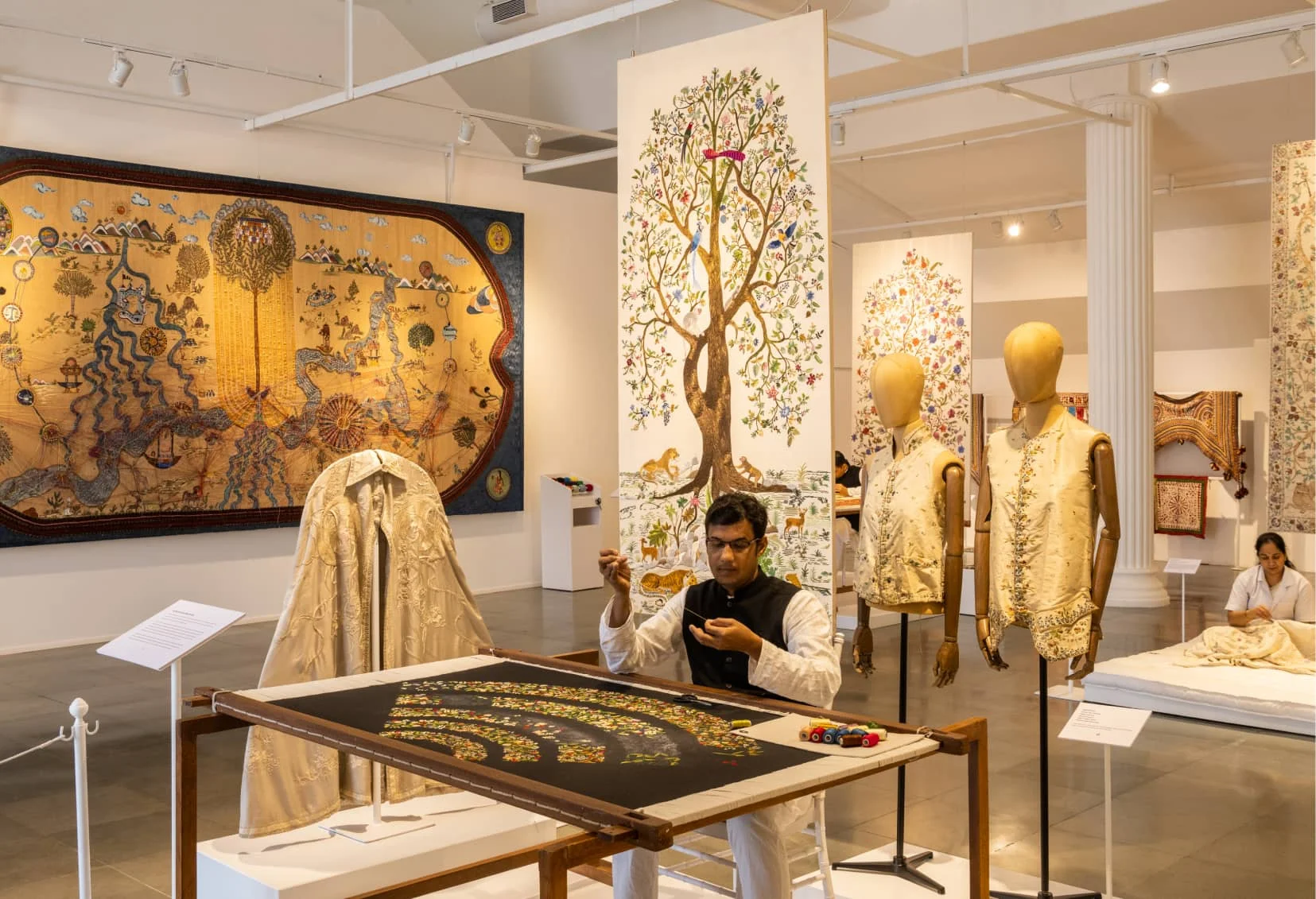

This inherent talent is present even today, kept alive and vibrant through the guru-shishya tradition of mentoring, the knowledge passed on personally and honed through apprenticeship. Expanding on our rich cultural heritage and a three-decade long creative partnership with Maria Grazia Chiuri, Artistic Director of Dior Women’s Collections, we bring forth a presentation dedicated to the creative spirit of our master artisans.
Through their collective stories, we thread the past, present and the incredible savoir-faire of India’s artisanal legacies. We welcome you to discover eleven schools of hand-craftsmanship brought to life through this artistic collaboration.
Mention the form of craft here

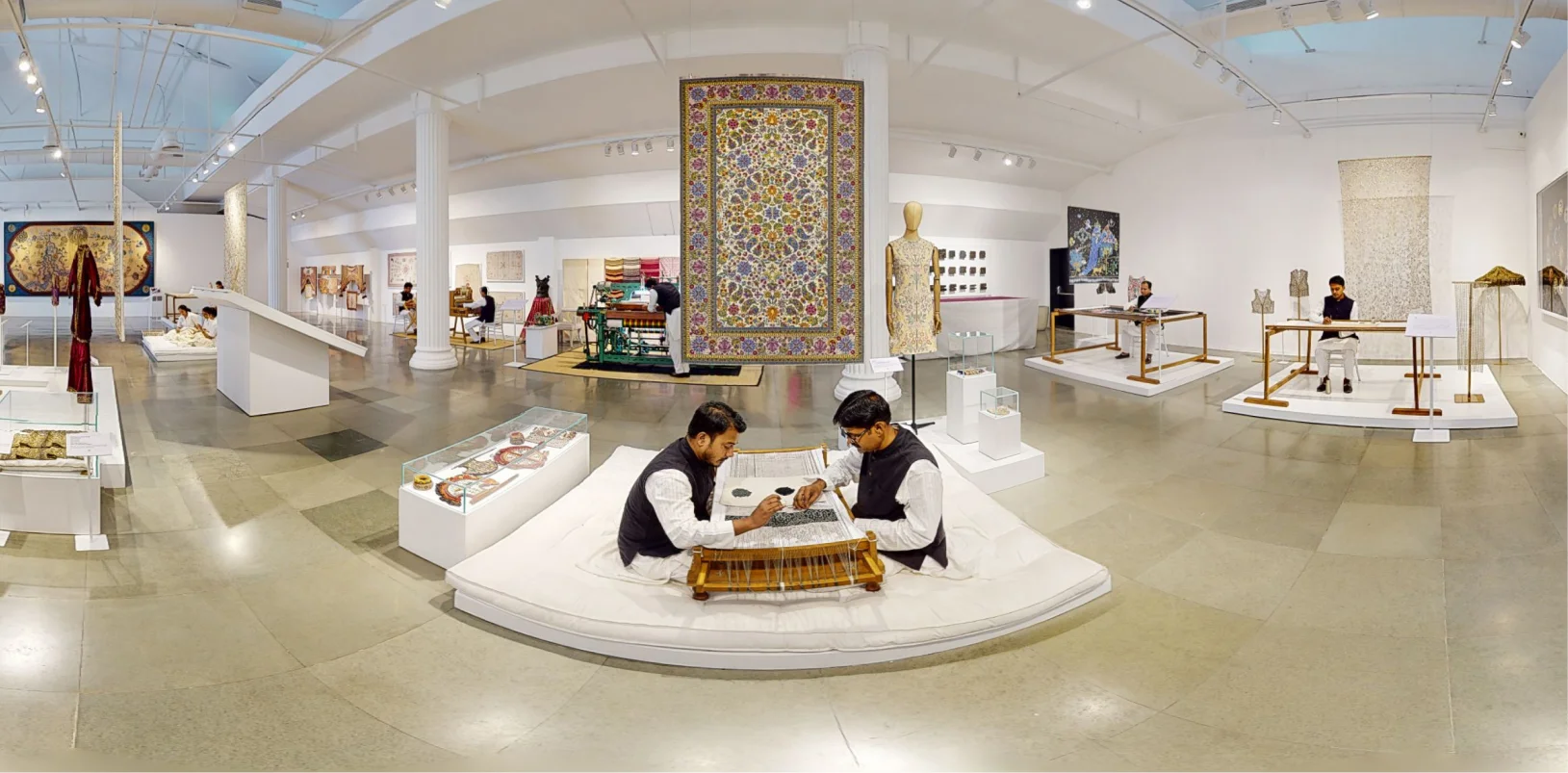
Micro-beads,
Needlepoint Techniques

Nabh Raat, Zardozi Technique

Toy Making, Needlepoint Techniques

Mūḷ Māthī / from the roots
April 1 2023 – April 22 2023
Snowball Studios, Mumbai, India
Mūḷ Māthī; From The Roots is a showcase of 22 large-scale textile artworks by award-winning Indian Artists Madhvi and Manu Parekh in collaboration with Dior and Maria Grazia Chiuri, Artistic Director of Dior’s Women’s Collections, and Chanakya Craft Collective and Karishma Swali, Artistic Director of Chanakya Craft Collective. Curated by Asia Society India Centre, as a postscript to an original commission by Maria Grazia Chiuri for the scenography of her Dior Couture spring-summer 2022 runway show, the exhibition presents 22 textile artworks, along with archival material, in an Indian context and for Indian audiences for the first time

The exhibition is an homage to the Parekhs, whose practices have a long-standing relationship with vernacular artistic traditions, an ode to the legacies of embroidery-work and textiles, and a critical reflection on the possibilities of collaborations and patronage in the preservation and sustainability of craft-based artistic work.
320
artisans
3
months
340
square meters
(3,600 square feet)
This exceptional series of artworks was created by 320 artisans from the Chanakya Ateliers, as well as female artisans from the Chanakya School of Craft, a non-profit school dedicated to craft, culture, and women's expression, who partnered together for more than three months to embroider 340 square meters (3,600 square feet) of work entirely by hand.
The resulting interpretations become new works in their own right, poised between quotation, stylistic exercise, and interpretation, reactivated by the gesture of craft using the language of embroidery.
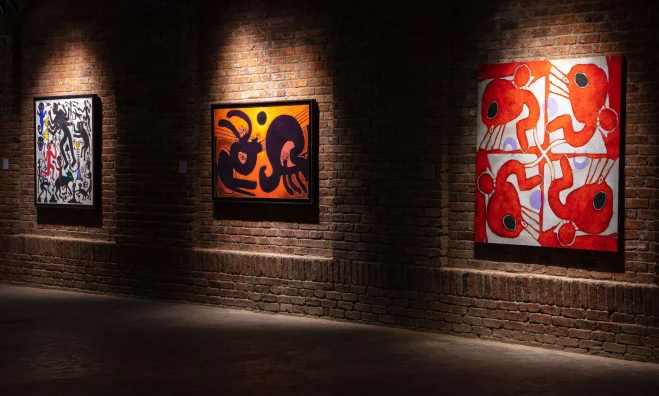
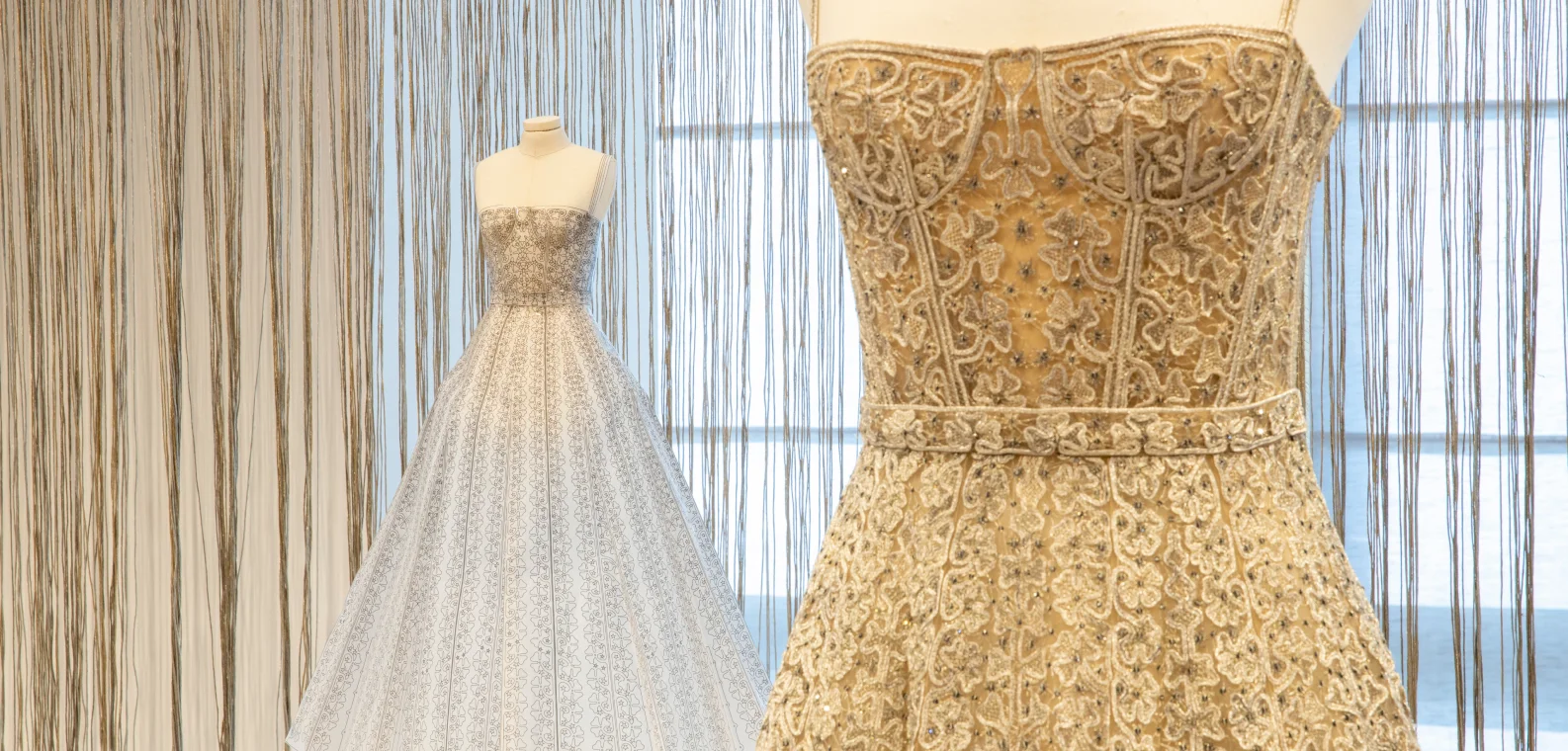
The Chanakya x Dior Retrospective
April 1 2023 – April 22 2023
Snowball Studios, Mumbai, India
The exclusive Chanakya x Dior retrospective featured 50 hand-embroidered archival pieces made with Chanakya across 16 couture and prêt-à-porter collections. Each season, Chanakya works collaboratively with the historic maison to innovate across various genres of craft and design to handcraft couture, ready-to-wear, accessories and fine art. To give insight into this process, each dress featured was told through a craft perspective, supported by its miniature design reference, raw materials and contemporary variations of traditional craft techniques.


ARTISTIC
COLLABORATIONS
SWIPE RIGHT TO EXPLORE
ALL THE COLLABORATIONS
ARTISTIC
COLLABORATIONS
Our artistic collaborations pave the way for the master-artisans of the Chanakya ateliers and the graduated women of the Chanakya School of Craft to work collaboratively with celebrated contemporary artists and blur the assumed heirarchies between art and craft.
Explore further on www.chanakya.schoolWORKS
Emerging from meaningful creative dialogues, Artistic Director Karishma Swali collaborates with the highly skilled artisans of the Chanakya School of Craft and Chanakya International. Together, they make artworks that transcend the distinctions between art and craft, forging a contemporary language that unlocks the infinite potential of craft.
